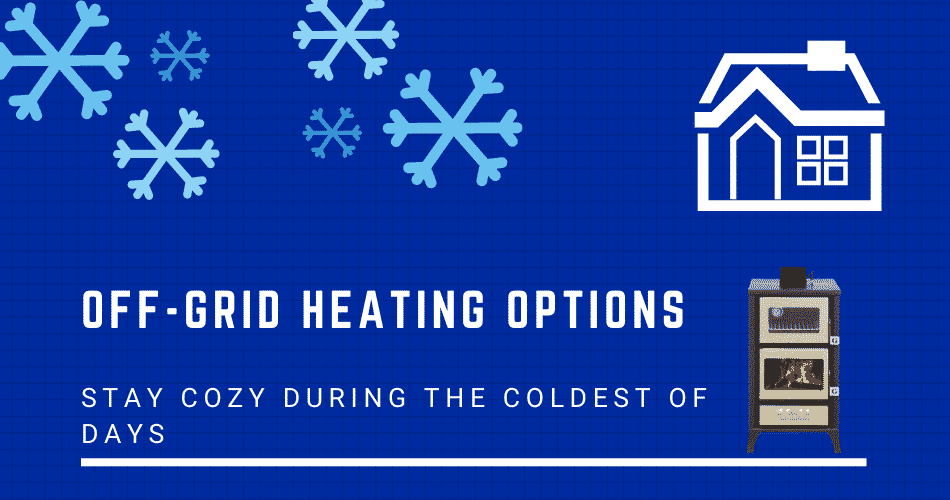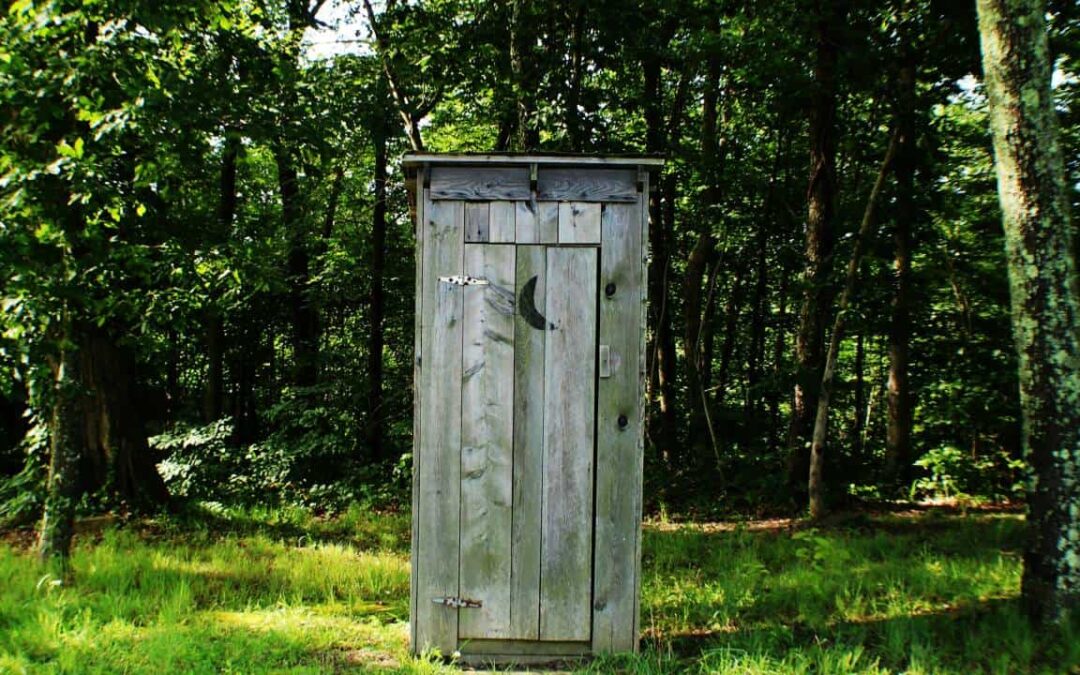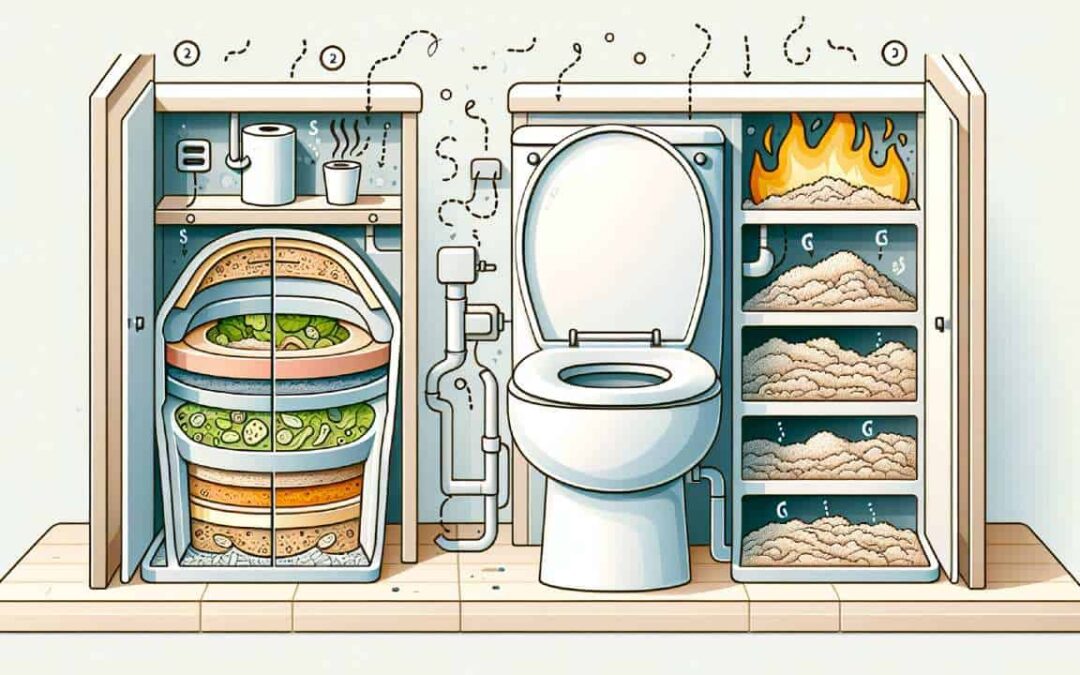Getting and keeping your home at the proper temperature while living off-grid requires more forethought than adjusting your thermostat in a traditional home.
You can’t rely on a constant supply of grid-provided gas or power.
Thankfully, there are several great options that are affordable and easy to source fuel for.
Read on to learn more about the basics of off-grid heating and to compare the pros and cons of the most commonly used methods for heating various types of dwellings.
Off-Grid Heating Basics
Heating an off-grid home isn’t very different from heating a traditional one at the base level. You have to produce enough heat for your climate and level of insulation to stay comfortable through winter. The biggest difference is dealing with power and fuel constraints that come from being off the grid.
Insulation
If you live in a cold climate, make sure you don’t skimp on the insulation. A poorly insulated tiny home or cabin can rapidly increase both the cost and difficulty in heating your home.
I’ve covered tiny house insulation in depth before, so I’ll just touch on the basics here. Insulate your roof first and most, then insulate your walls, then your floors. Heat rises, and a well-insulated ceiling can be the difference between a comfortable home and a cold one.
There are plenty of insulation choices out there, also covered in the above article. Find the one that works best for your climate and needs.
Safety
When comparing types of heating systems, safety is the number one consideration. Every type of heater comes with some risks, but most modern units are designed to function safely over the long term.
Anything with an open flame, such as a wood/pellet stove or gas/kerosene heater, produces carbon monoxide. Permanently installed fuel heaters require venting, but many portable ones don’t have that option.
Consider what your tolerance for risk is, how your system is going to be installed, and whether it’s operating to the manufacturer’s assumed conditions. You should also always maintain adequate smoke detectors and carbon monoxide sensors within your home.
Heating Power
The heating power of a tiny house heater is almost always measured in British Thermal Units (BTU). Use the square footage of your home or individual rooms to figure out what level of heating power you need.
A good rule of thumb is 5,000 BTU per 100 square feet of space. That gives you ample power for most climates.
Size and Installation Difficulty
Heating systems range in size from portable space heaters built for rooms of no more than 100 or so square feet all the way up to whole-house central heaters. For the portable units, installation is as easy as plugging them in or filling them up with fuel, but it gets a lot more complicated for the permanent models.
It’s definitely possible to DIY the installation, but you’ll need a firm grasp on both how to install the specific type and model of heater you choose and what safety steps have to be taken. It’s especially important with a natural gas or propane heater as these require proper venting to prevent exhaust fumes from accumulating in your home.
Here’s a good primer on installing a gas heater that covers the basic steps and precautions you need to follow:
Price and Efficiency
Figure out what your heating budget is before you start looking at systems. Make sure you know both what you can afford upfront and how much you can spend in operating costs.
There are tons of cheap systems out there, but they’re often a lot more expensive to use in the long run. Electric systems are more costly upfront in an off grid installation due to the requirement to maintain a solid power supply.
Small portable units start in the $20-$30 range but don’t take fuel or electrical costs into account. Heaters of this size are good to heat a single room or very small home but aren’t particularly efficient for larger spaces.
A more permanent solution costs more upfront and is more complicated to install, but can also heat a much larger space more efficiently. You should expect to pay at least several hundred dollars for a larger heater plus the cost of installation if you choose not to DIY.
Permanent vs Portable
Heating systems come in both permanent and portable versions. Permanent systems are generally more expensive and larger (think installed fireplaces or central heating systems), but also more powerful, longer-lasting, and often cheaper to operate.
Portable systems are smaller, generally cheaper, and can be stored away when the winter is over. Still, they’re also easier to break and lack the comprehensive safety features of permanent heaters designed for home use. It’s also usually more expensive to run something like a portable propane or small electric heater than a comparable permanent model.
Best Tiny House Heating Options:
Wood /Pellet Stoves
Burning wood to stay warm is as old as humanity itself. Wood stoves are a popular and affordable option for off-grid enthusiasts as they’re a more ‘natural’ way to heat your home. If you have acreage with timber, you can even harvest your own firewood for nothing, but the cost of fuel for a chainsaw.
Pellet stoves are newer, but in many ways superior to wood stoves. They have a higher upfront cost, but can be less expensive to operate, so long as a good supply of pellet fuel is available.
Pellet stoves burn 1 gram of particulates per hour compared to a EPA-certified cabin wood stove, which burns 2.5-7.5 grams of particulates per hour.
In simpler terms, pellet stoves create less smoke, and burn cleaner and more efficient than traditional cabin wood stoves.
A homeowner with a 1,000 square foot home will go through about 2-3 cords of wood per year for their wood stove.
For wood pellets, you should assume 2-3 tons of pellets needed for a year’s heating.
If you are on the fence between choosing either a pellet or wood stove, I highly recommend reading of our article where I discuss the differences between pellet stoves and wood burning stoves, the pros and cons of each, and ultimately, help you figure out which one is best for your needs.
If you are looking to purchase a wood burning stove, check out our review of our favorite small wood burning stoves.
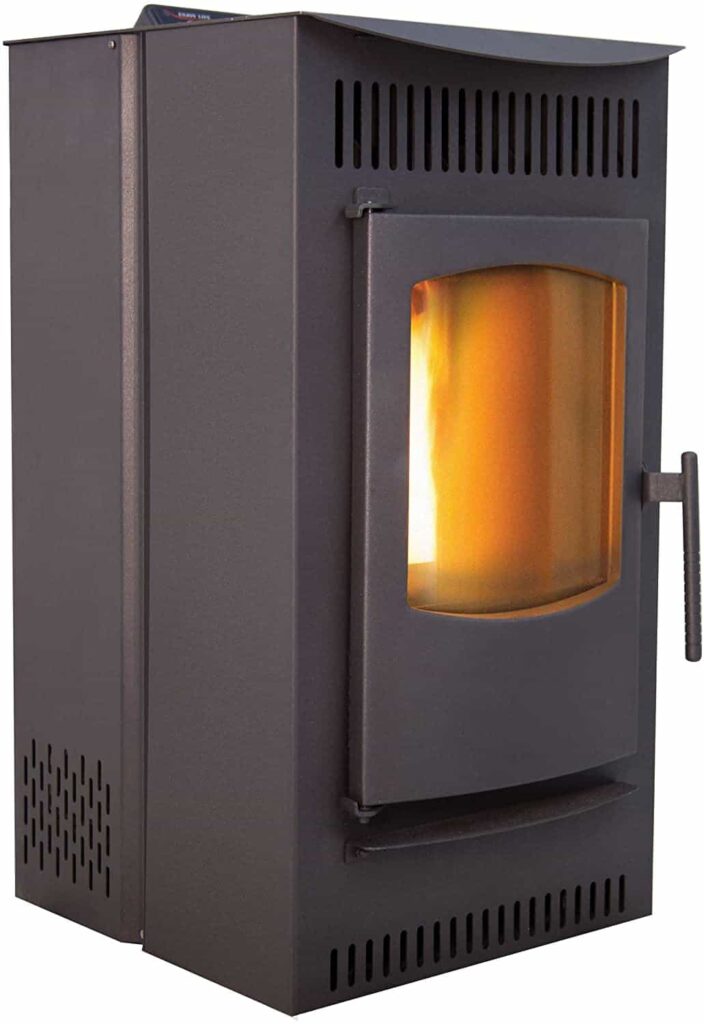
Average Annual Cost Of Wood/Pellets To Heat 1,000 Square Feet: Wood Stove $600 to $900 depending on local wood prices / Wood Pellet Stove $500 to $1,250
Pros
- Widely available in a variety of different styles and types
- Easy to use and maintain
- Firewood is inexpensive and available everywhere
- Wood pellets are becoming much more widely available and dropping in price
Cons
- Requires a chimney and proper venting to use safely
- Wood or wood pellets take up a lot of space
- Wood stoves and pellet stoves are still more expensive than other options
- Prices for pellets are higher if you don’t buy in serious bulk
To learn more about tiny home wood stoves, click here.
Propane and Natural Gas Heaters
Other than wood stoves, gas and propane heaters are probably the most common method used to heat off-grid homes. You can choose from permanently installed natural gas/propane wall heaters with dedicated venting or use widely available portable models such as the extremely popular Mr.Buddy Propane Heater.
Natural gas is very rare for an off-grid home for the simple reason that it’s a grid-supplied gas that requires a gas line. For that reason, propane is the name of the game, though it is more expensive.
They benefit from easy access to fuel, the ability to store enough for a whole winter in large tanks, and the flexibility to use smaller camping-style canisters in an emergency.
Gas heaters are one of the most affordable and reliable options for off-grid heating.
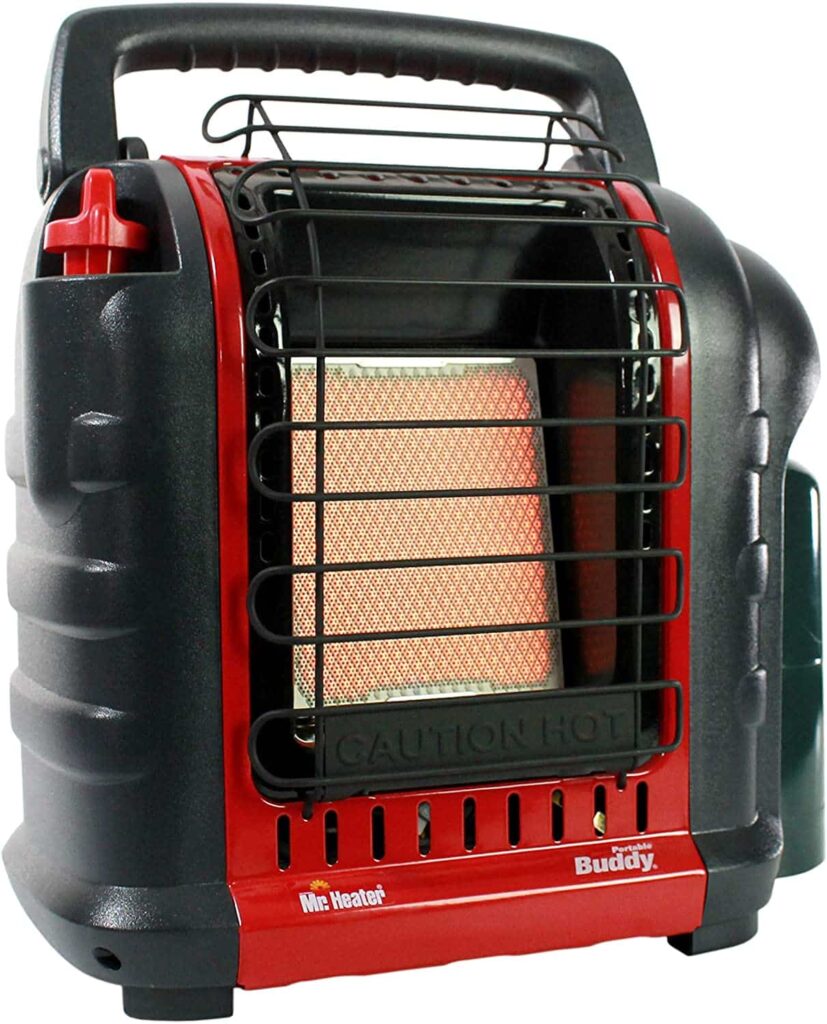
Average Annual Cost Of Natural Gas/Propane per 1,000 Square Feet: Natural Gas $500-700 / Propane $1,800-$2,000
Pros
- Huge range of heater styles, sizes, and power ratings
- Propane can be easily stored in large quantities and purchased at a reasonable price
- Propane can also be used for other appliances like water heaters, stoves, or refrigerators
Cons
- Propane heating requires adequate venting plus safety measures like CO alarms
- Portable propane heaters cannot be used indoors unattended or overnight
- Natural gas lines are rarely available for off grid homes
Electric Heating
Electric heating is rarely mentioned when off grid living is brought up. Simply put, it’s difficult to justify a solar or wind power system large enough to power electric space heaters or central heating when options like propane, natural gas, or natural wood stoves provide equally efficient heating with far lower costs.
The chief benefit electric heating options have going for them is their lack of exhaust and ability to precisely target a specific temperature.
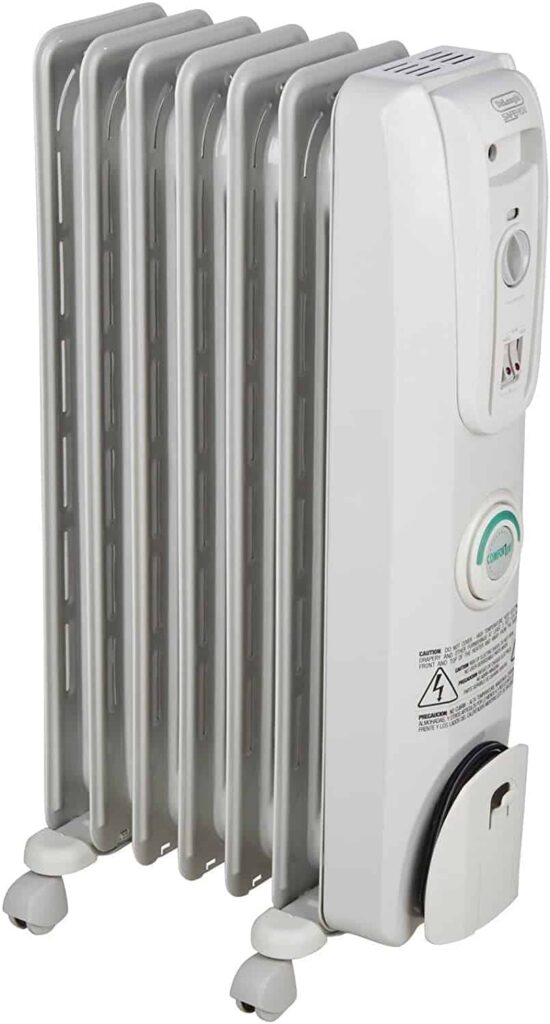
Average Annual Cost Of Power Per 1,000 Square Feet: $600 – $800 (Using equivalent grid electric prices, solar is significantly higher for a powerful enough system)
Pros
- Available in central, room targeted, and portable options
- Can quickly reach a set temperature and keep it there precisely
- Requires no storage space for fuel
- Heating itself produces no fumes, exhaust, or pollutants
- Inexpensive and widely available
Cons
- Heating levels of electricity are challenging to generate and store off grid
Kerosene and Heating Oil Heaters
Kerosene and heating oil are both liquid petroleum products used in heating. Oil furnaces are commonly used in parts of New England and the Midwest and are easily available from various manufacturers.
They’re a good option if you’re in a very cold climate and are concerned about potential electrical outages. Kerosene heaters also make great backup heaters as they’re compact, powerful, and kerosene itself has a long shelf life.
Heating oil furnaces are on the higher end of the pricing spectrum for off grid heaters. Expect to spend between $3,000 and $6,000 for one powerful enough to heat 1,000 square feet.
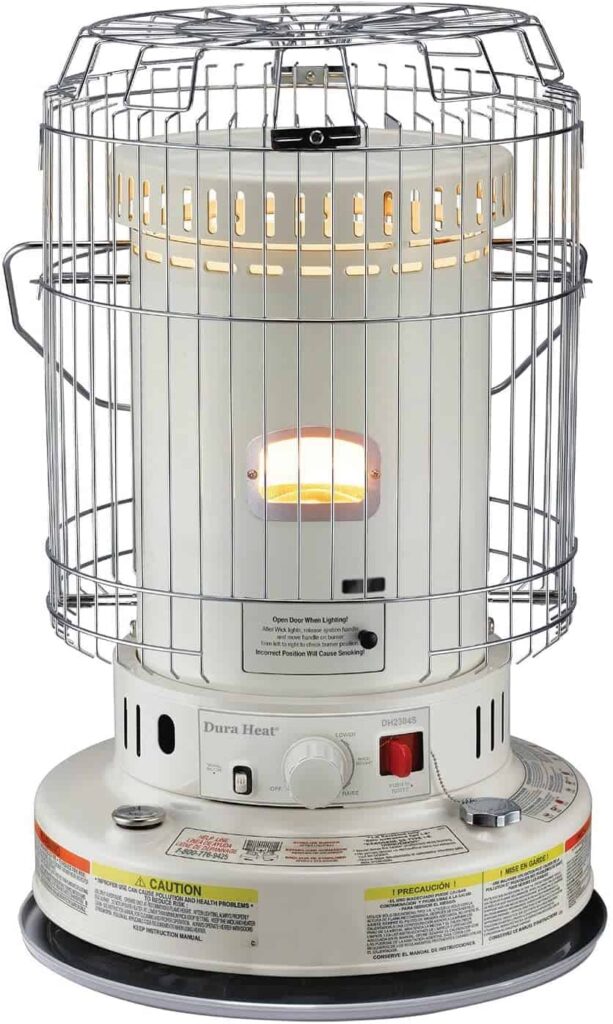
Average Annual Cost Of Kerosene/Heating Oil Per 1,000 Square Feet: Kerosene $1,500 / Heating Oil $1,300
Pros
- Kerosene heaters are highly efficient, extracting 90%+ of the energy from kerosene fuel
- Both portable and installed vented kerosene heaters are available
- Kerosene is widely available and inexpensive
- Heating oil can be delivered and stored cheaply
Cons
- You can’t use portable kerosene heaters indoors without ample venting
- Storing bottles of kerosene can be a fire hazard
- Both kerosene and heating oil produce greenhouse gases when burned
Final Thoughts
Heating an off-grid home requires a different outlook than heating a grid-connected one. Fuel availability and storage becomes more critical than outright efficiency, with some of the best options actually a bit more expensive to operate than others.
Keep in mind how cold and how long your winters are before you make your decision.
Additional related reads:
- Learn more about heating options for tiny homes here.
- If you’re looking for ways to heat water in your tiny home, we have an in-depth piece on the best tiny house water heaters on the market here.
- In super cold weather climates, learn how to prevent freezing water lines to your tiny home here.

